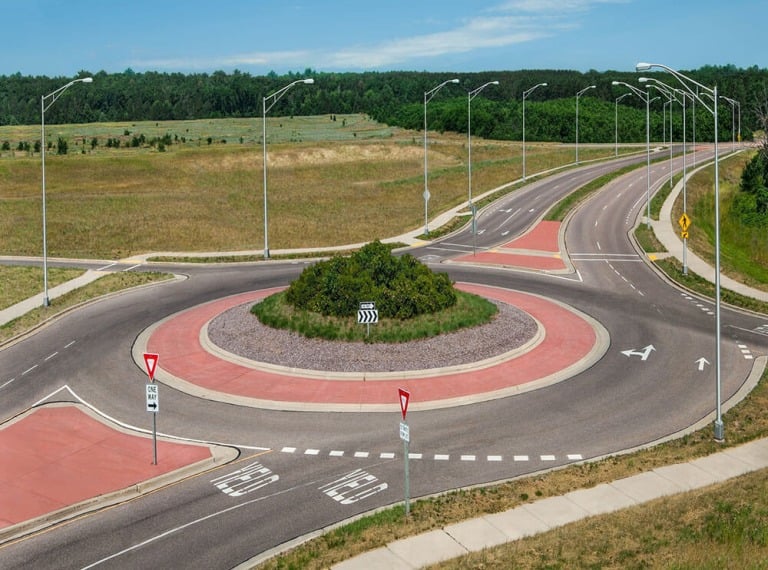
Mastering the Roundabout: A Guide to Efficient and Safe Navigation

Roundabouts, those circular intersections that have become increasingly common on our roads, often evoke strong reactions from drivers. While some praise their efficiency and safety, others express confusion and frustration about their proper use. Regardless of these mixed feelings, the undeniable truth is that roundabouts are designed with safety and efficiency at their core. The Insurance Institute for Highway Safety (IIHS) has provided compelling data that underscores their benefits, revealing that roundabouts can dramatically reduce injury crashes by up to 80% and all types of crashes by 35-47%. Beyond safety, the seamless roundabout traffic minimizes delays and congestion, offering a greener solution by curbing vehicle emissions. However, the true potential of roundabouts is often overshadowed by misconceptions and lack of knowledge. A sentiment echoed by many who live in areas where drivers are unfamiliar with roundabout navigation. This underscores an urgent need: while the infrastructure evolves, there's a pressing requirement for comprehensive education and awareness campaigns. Let's go over some roundabout basics that will help keep traffic moving.
The Rules of the Roundabout
The Federal Highway Administration (FHWA) emphasizes three main rules for roundabout navigation:
- Slow Down: As you approach a roundabout, reduce your speed. This gives you more time to judge and enter a comfortable gap in circulating traffic. Slowing down also ensures that any potential collisions are less severe.
- Look Around: Always be aware of your surroundings. Check for pedestrians at crosswalks and be ready to yield to them. Also, always yield to traffic already in the roundabout.
- Be Ready to Yield: Before entering, yield to both lanes of traffic in the roundabout, not just the one closest to you. If large vehicles like trucks or buses are present, give them space and avoid driving next to them.
- Use Turn Signals: Before you exit the roundabout, activate your turn signal to indicate your intended exit. This informs other drivers of your intentions and helps maintain a smooth traffic flow. You should also use turn signals when changing lanes in multi-lane roundabouts.
The Importance of Turn Signals in Roundabouts
One of the primary rules when navigating a roundabout is the use of turn signals. Using turn signals in roundabouts is crucial for several reasons:
- Communication: Turn signals inform other drivers of your intentions, reducing confusion and potential collisions.
- Safety: Proper signaling can prevent accidents by giving other drivers ample time to react to your movements.
- Efficiency: When drivers use signals correctly, traffic flows more smoothly, reducing delays and congestion.
Benefits of Roundabouts
Roundabouts offer numerous advantages over traditional intersections:
- Safety: Roundabouts reduce the most severe types of intersection crashes, such as right-angle, left-turn, and head-on collisions. The Insurance Institute for Highway Safety (IIHS) states that roundabouts can reduce injury crashes by 72-80% and all crashes by 35-47%.
- Efficiency: Roundabouts improve traffic flow. Vehicles move continuously, reducing the need for stops and the associated start-up delays.
- Environmental Benefits: With fewer stops and idling, roundabouts lead to reduced vehicle emissions and fuel consumption.
- Pedestrian Safety: Pedestrians only need to cross one direction of traffic at a time, and due to the design of roundabouts, traffic speeds are generally lower, making it safer for pedestrians.
Embrace the Roundabout Revolution
Roundabouts are more than just a traffic solution; they're a testament to how innovative design can transform our roads. As more drivers experience and understand them, the initial resistance and confusion will likely fade.
For now, it's crucial to spread awareness, share the undeniable benefits, and listen to the voices of drivers. After all, the road to safer and more efficient driving is a journey we're all on together.
